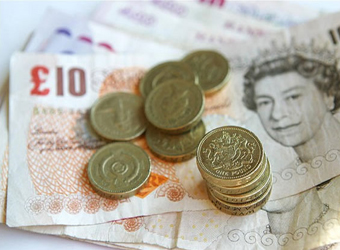Sterling was flat on the day at $1.3115, nursing losses after it skidded in the previous session against a backdrop of political turmoil as British lawmakers this week debate the U.K. government’s plans for leaving the European Union.
The Brexit bill will be debated on Tuesday and Wednesday, with as many as 40 of Prime Minister Theresa May’s Conservative lawmakers prepared to support a no-confidence motion against her, according to the Sunday Times newspaper.
Also in focus, European Central Bank chief Mario Draghi, Federal Reserve Chair Janet Yellen, Bank of Japan Governor Haruhiko Kuroda and Bank of England head Mark Carney will form a panel on central bank communication at the ECB-hosted conference in Frankfurt later on Tuesday.
“Major currencies have consolidated in ranges today, but something could emerge at the ECB conference later in the day,” said Keiko Ninomiya, senior FX market analyst at SMBC Trust Bank in Tokyo.
The dollar index, which tracks the U.S. currency against a basket of six major rivals, was steady on the day at 94.486.
Against its Japanese counterpart, the dollar inched slightly higher to 113.66 yen, but remained below its eight-month high of 114.735 hit last week.
“The dollar is getting support from U.S. yields, but I am actually surprised that it did not go higher, so perhaps the correlation between yields and the dollar is breaking down,” said Masashi Murata, currency strategist for Brown Brothers Harriman in Tokyo.
“But with the Fed expected to hike rates in December, the dollar could go higher” in the coming weeks, he said.
The yield on two-year U.S. Treasury notes scaled a nine-year peak on Monday, as the yield curve resumed its flattening and investors priced in a 25-basis-point interest rate hike by the Federal Reserve next month.
The 10-year Treasury yield rose to 2.407 percent from its U.S. close on Monday of 2.400 percent. It was at 2.304 percent as early as Nov. 8.
The euro inched up 0.1 percent to $1.1672, holding well above last week’s a 3-1/2-month low of $1.1553.
The New Zealand dollar was the biggest mover in the Asian session, skidding 0.6 percent to $0.6863 and on track for its fourth session of losses.
It moved back toward its Oct. 27 low of $0.6818, which matched a low logged in May.
The kiwi had risen as high as $0.6980 last week, as the Reserve Bank of New Zealand raised its inflation forecasts in response to the fall in the currency and to the Labour government’s plans for more spending.
The latest median projection of 48 analysts called for the kiwi to stand at $0.7000 in one month, down from $0.7200 in the previous poll.
The Australian dollar rose 0.1 percent to $0.7632, managing to mostly shrug off downbeat Chinese economic data after the latest survey of businesses from NAB showed the best conditions in two decades, with sales and profits surging in October.
The Aussie is sensitive to Chinese data as it is often used as a proxy for that country because of Australia’s major trade exposure. China’s retail sales rose 10 percent on the year in October, while industrial output grew 6.2 percent, both missing expectations as the government extended a crackdown on debt risks and factory pollution. Source: Reuters
Source: Reuters



